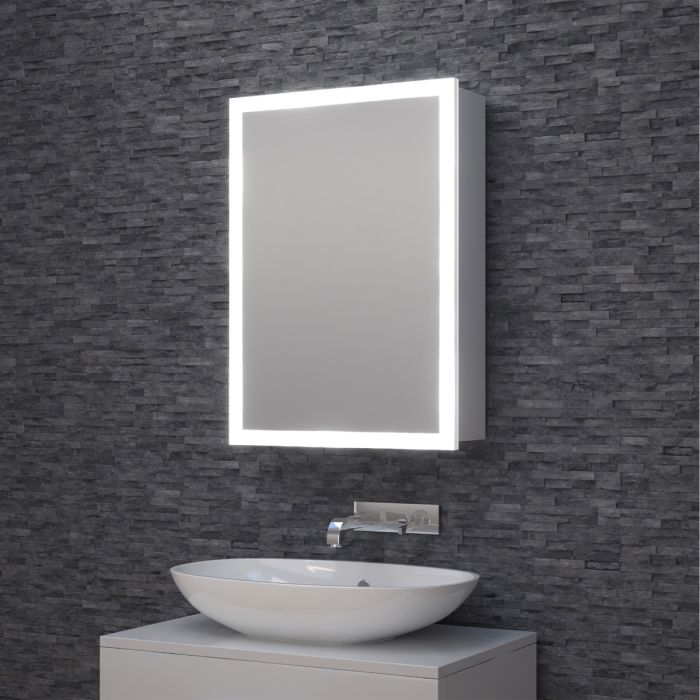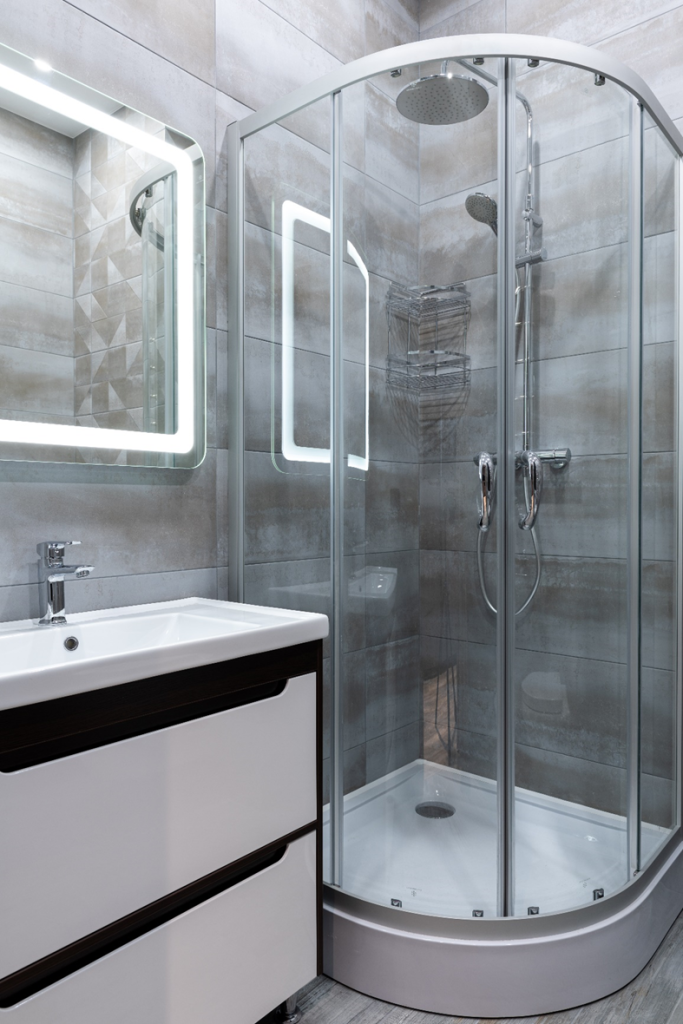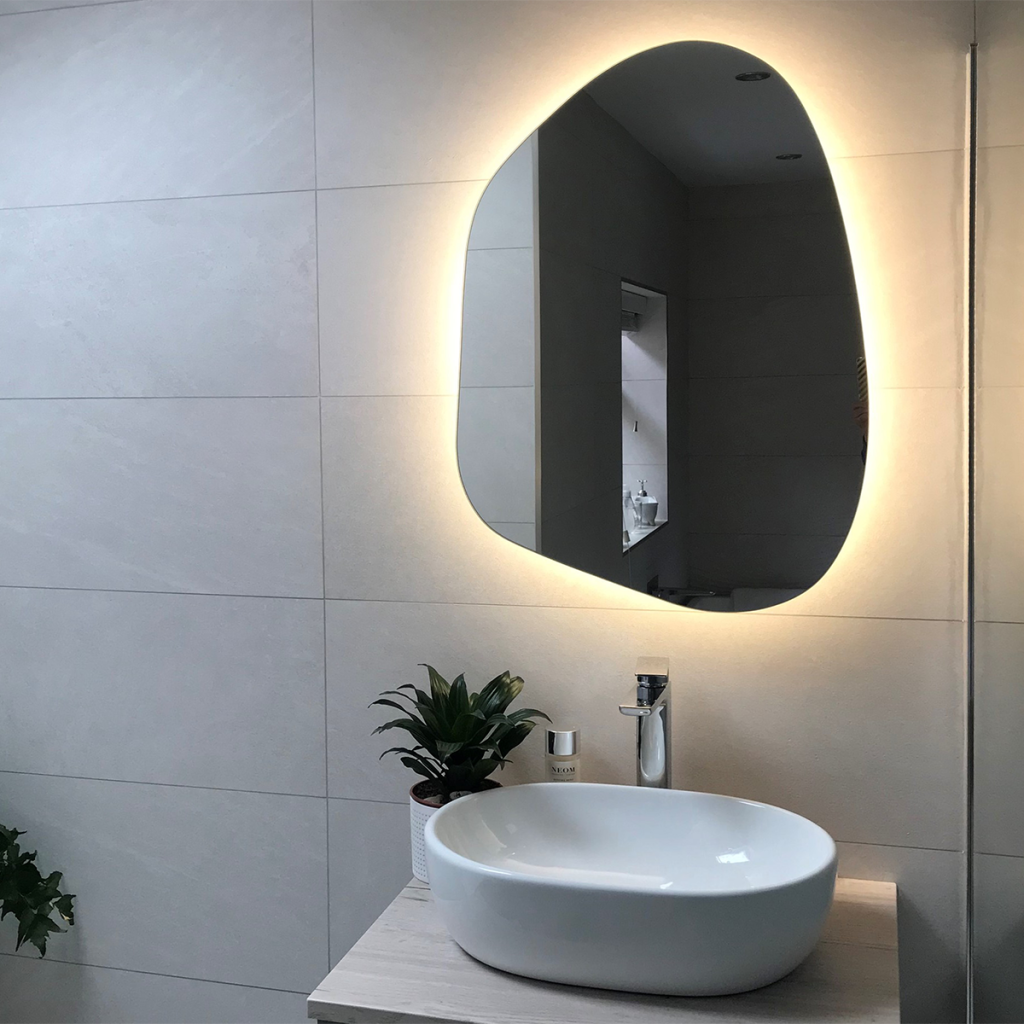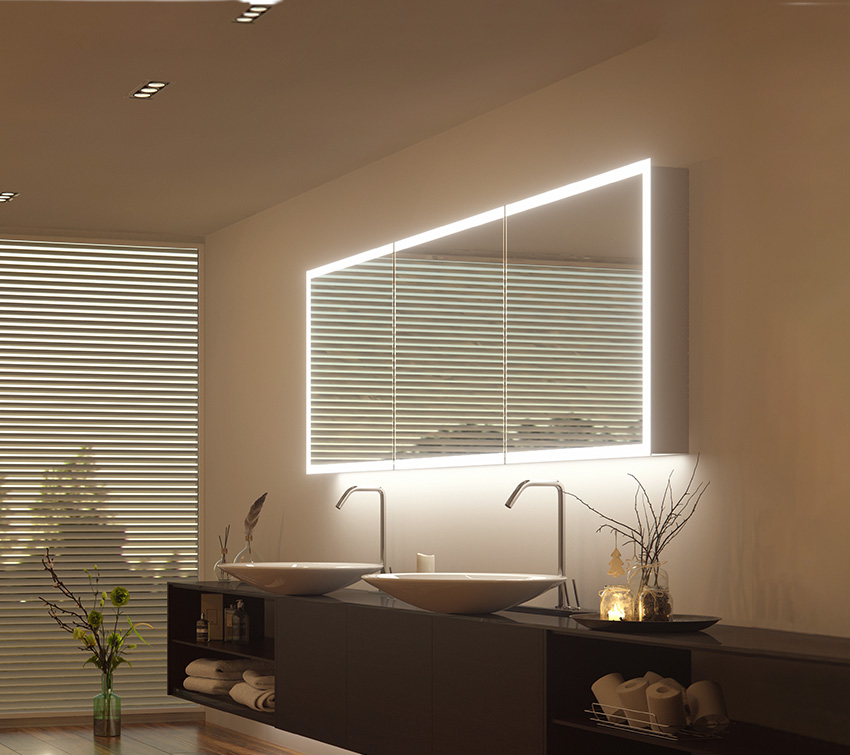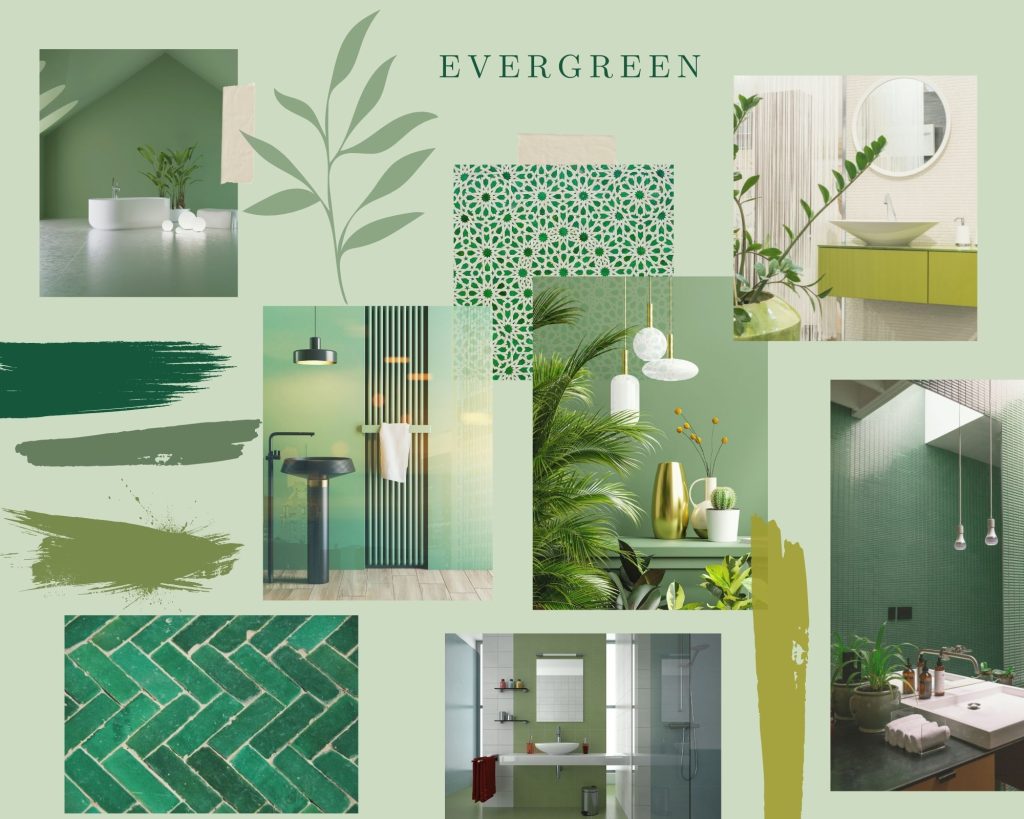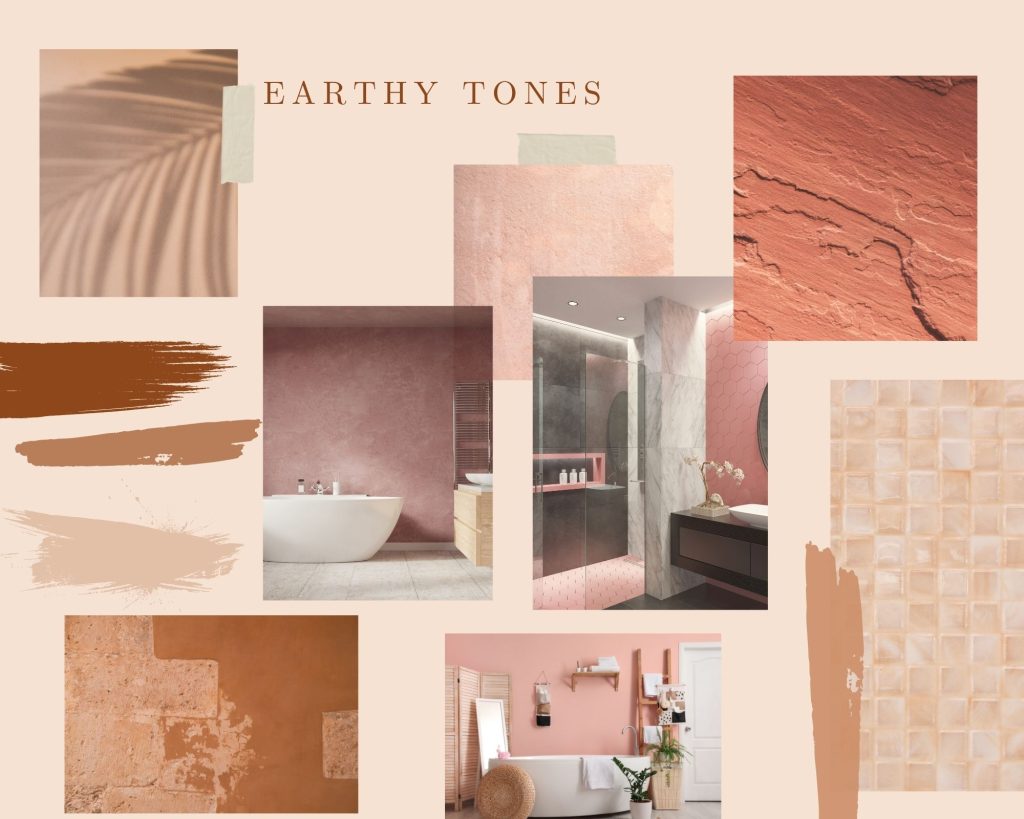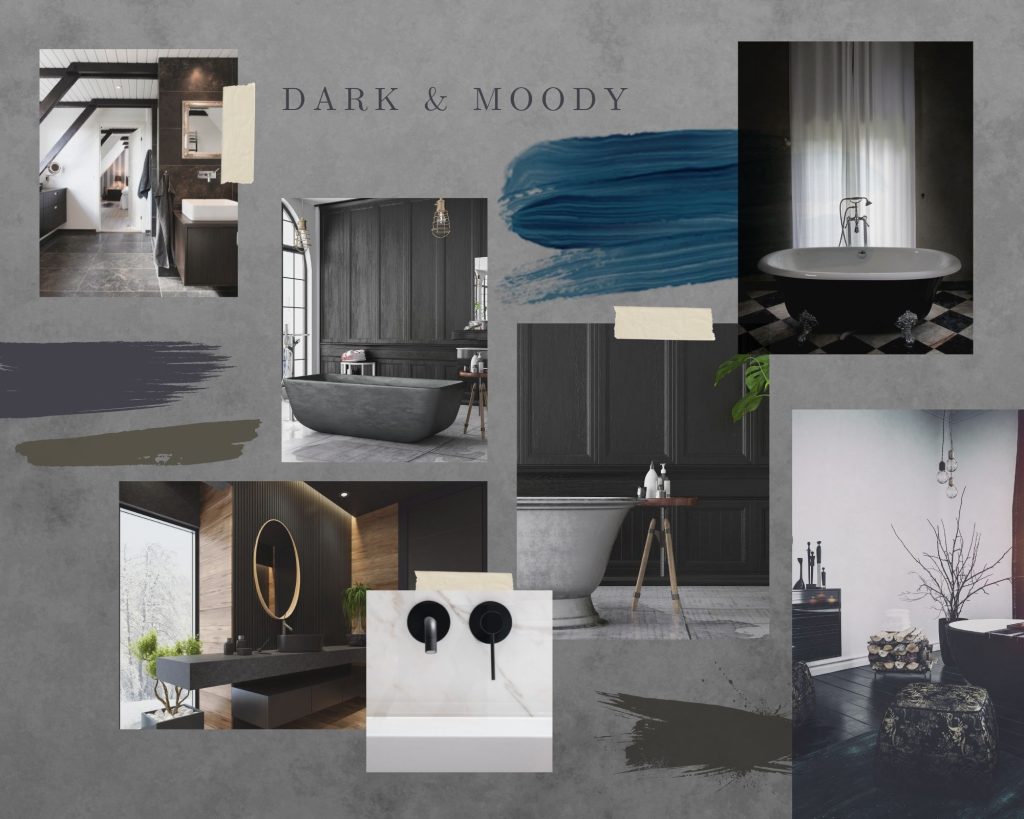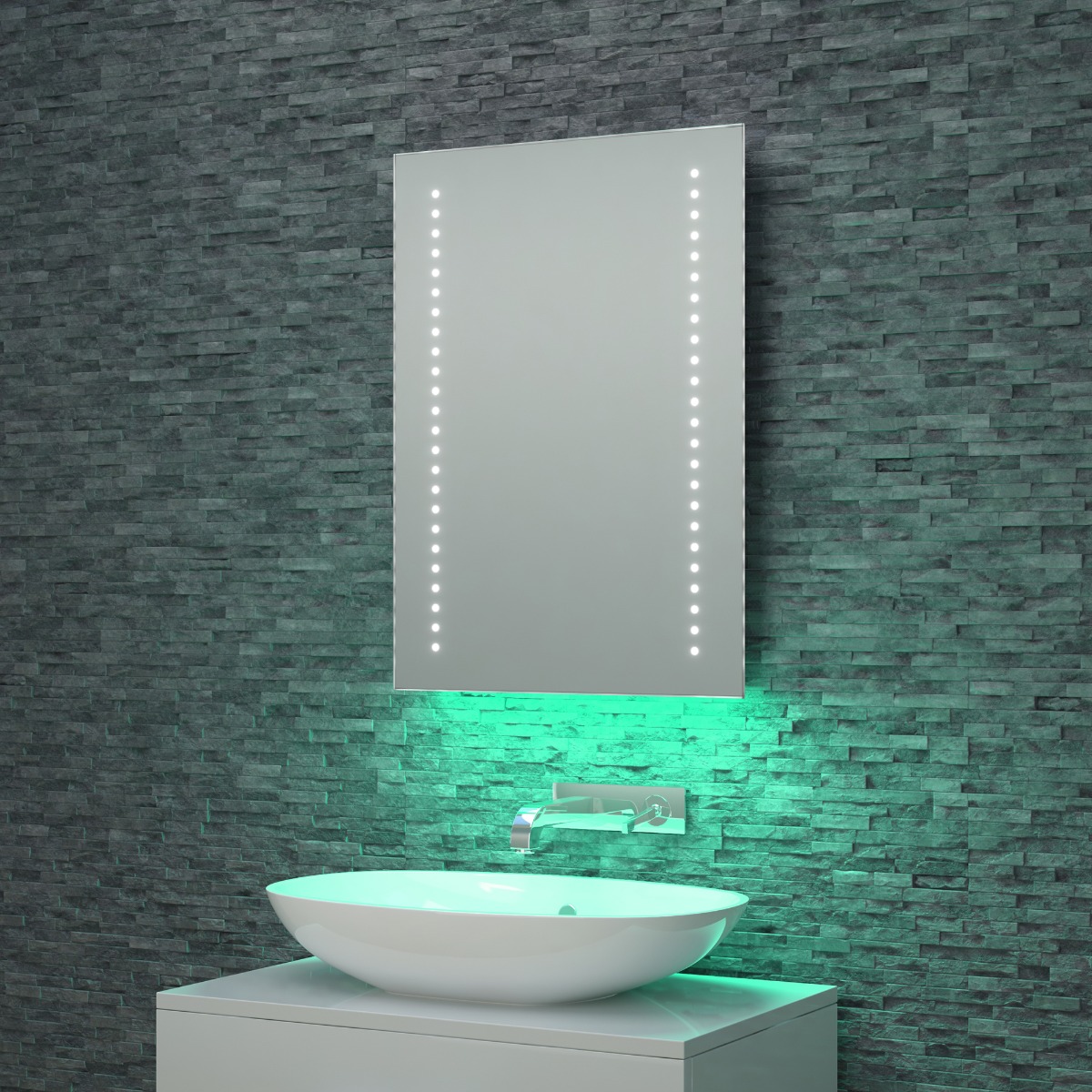Sustainable Bathroom Design Themes
-Sustainability. – A term that by now we are all familiar with as we look to reduce our negative environmental impact on earth. But how does it translate into designing interiors, and more specifically, how do we create earth-friendly bathroom spaces?
By minimising our energy usage, lowering the number of consumable items that we waste, and seeking out alternative, eco-friendly materials for our interiors, we can become more thoughtful about design. But where do we begin in our quest for seeking the best planet protecting bathrooms?
With all things eco-friendly in mind, we have pulled together some of our top tips for styling a bathroom sustainably:
Materials matter

The great news is that earth-conscious materials such as metal, porcelain and glass are often naturally go-to bathroom material selections. They also happen to be eco-friendly options for tiles, ceramicware and décor, so when it comes to the details of the bathroom elements, there is a wide variety of planet-friendly product to choose from.
When it comes to selecting sustainably sourced accessories, refill metal or glass bottles with your favourite (eco-friendly) soap. Not only do glass or metal bottles always look great in the style stakes, but they are also more durable than materials like plastic, which means less frequent requirements to replace, and in turn lower rates of raw material usage.
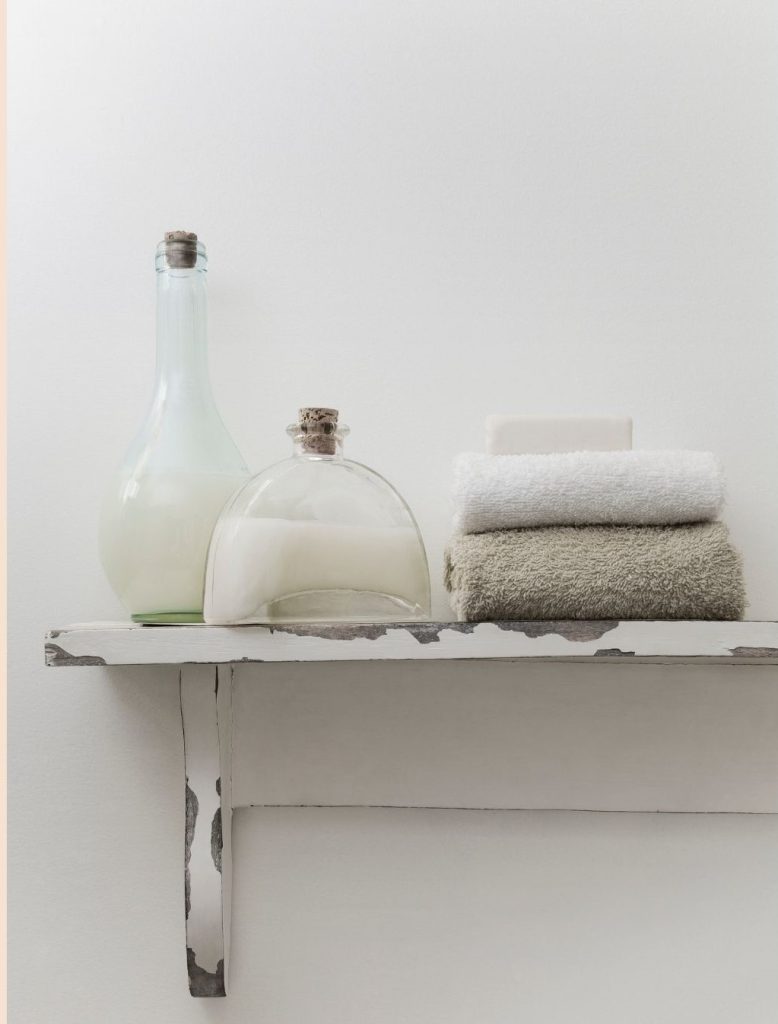
Bamboo is a great sustainable material as it grows quickly and can be made into all kinds of different items. From cotton buds and bath racks to towels and toothbrushes, bamboo makes a good, hard-wearing option for bathroom accessories. And if the time does come to replace? Bamboo is a fully compostable material!
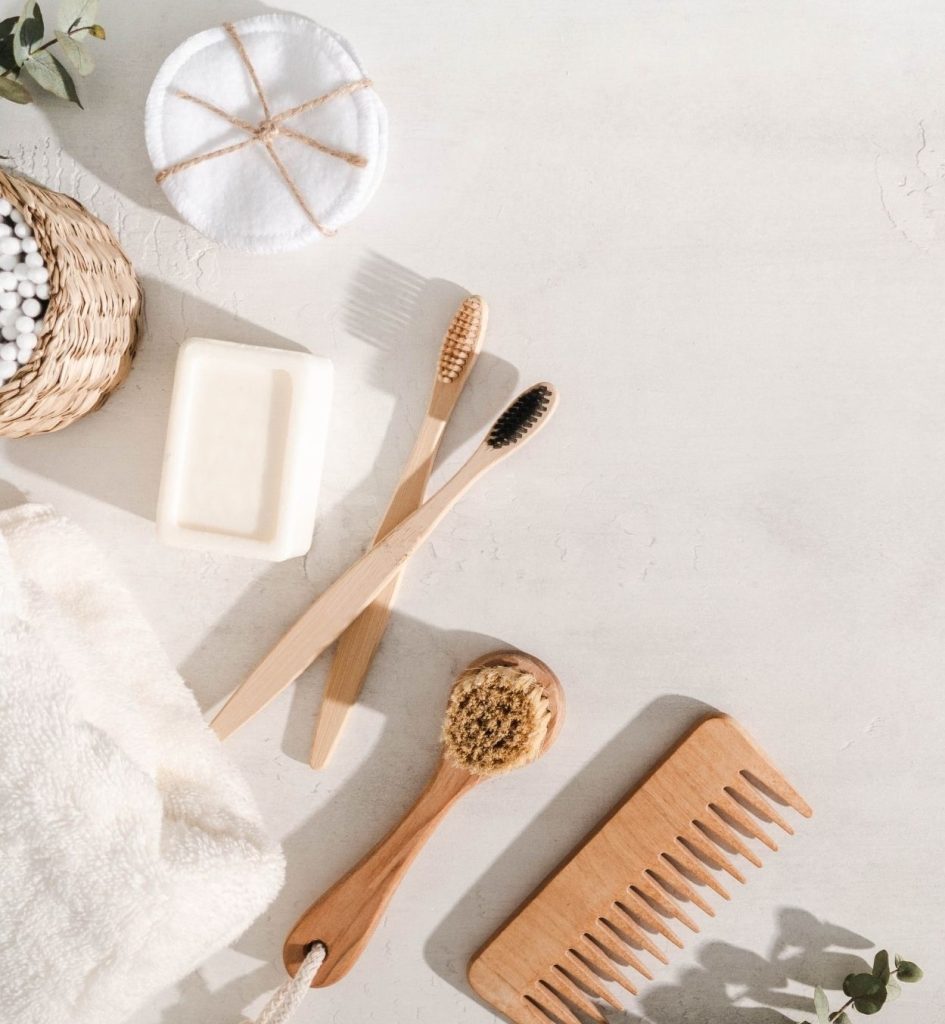
Natural worktops such as stone and granite will last longer than acrylic or laminate, which by default makes the natural elements a far more planet friendly option for bathrooms.
When it comes to dressing windows, organic linen is a great eco-friendly option which will also offer a relaxed, cosy vibe to a bathroom interior.
Embrace mother nature
When choosing colour options for a sustainable bathroom theme, be inspired by the earth, sea, and sky. Muted and earthy palettes such as Terracotta, Clay, Apricot, Leaf green, Seafoam, Concrete and Olive green are all hues that work beautifully together or when paired with off white or beige.
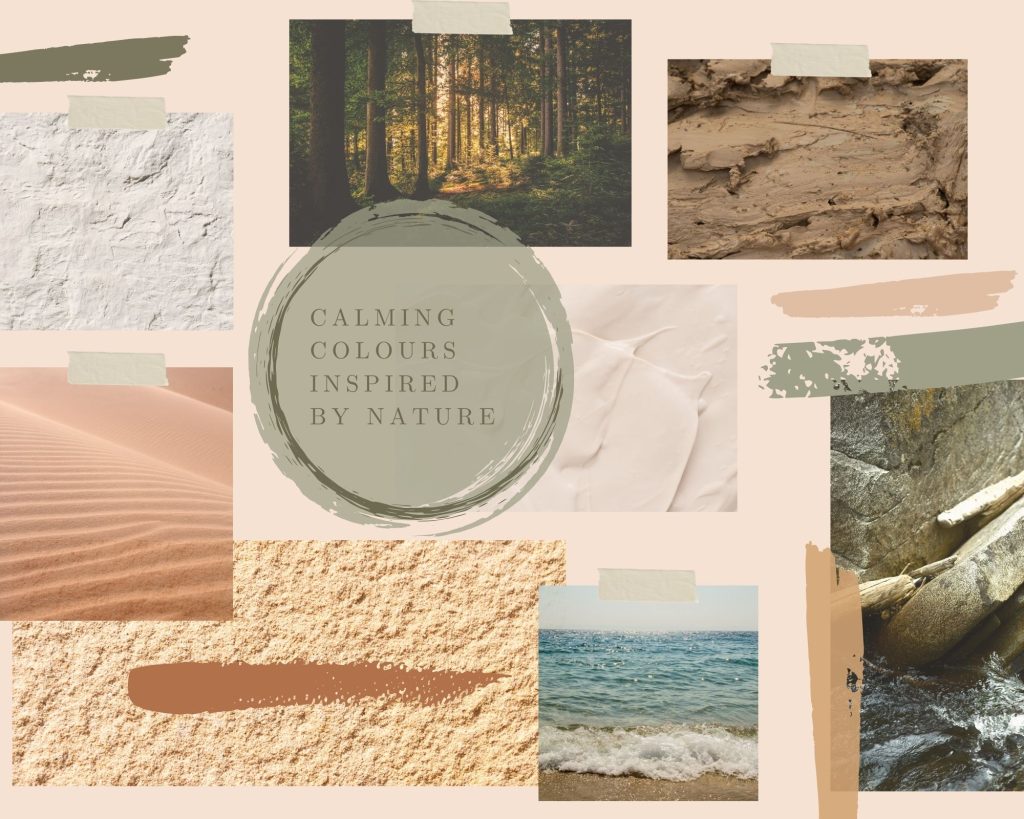
To bring nature inspired colours into your bathroom, you could choose rustic, handmade tiles in these tones or to switch the palettes more frequently in the future, you could try neutral walls and flooring for more of a blank canvas, and instead pull the earthy tones simply through accessories such as towels, soap dispensers and artwork.
For a warm, slightly rustic, and raw effect, consider colour washing with these hues onto wood materials or dying fabrics with natural pigment dyes.
Positive paint
If you are looking for paint for your bathroom, seek out eco-friendly paint brands with low toxin levels, and use paint brushes and rollers that are made from sustainably sourced materials.
Rustically worn
The key to achieving an effortless and organic thrown-together look in sustainable bathrooms, is to embrace imperfection.

Shopping from preloved sites and shops means that you are helping prevent unwanted furniture reach landfill. Whilst the practical elements such as toilets, basins and showers are probably best to buy new, mixing them with retro or vintage items such as cupboards, artwork and shelves that have a slightly worn patina to them will add to the eco-friendly style overall and will create an authentic and original design. Bathroom furniture made from reclaimed wood has been growing in popularity in recent years for its more natural, imperfect qualities.

Mix and match items for an eclectic style. – As a general rule of thumb, if the colour palette is subtle or quite restricted, then you can mix styles within this to create a unique look and feel.
Reuse, recycle and refurbish
An alternative to buying second-hand, is to look around your own home or on marketplace sites for household items. Think outside of the box by giving new life to those items through repurposing them to create interesting bathroom elements.

For example, old metal buckets make fabulous planters, second hand wooden ladders can be hung from ceilings and used to hang botanicals and greenery, and vintage A-frame or lean-to ladders make great towel hanging rails. If you are into a little DIY, then Mid-century sideboards can make fabulous basin vanity units.

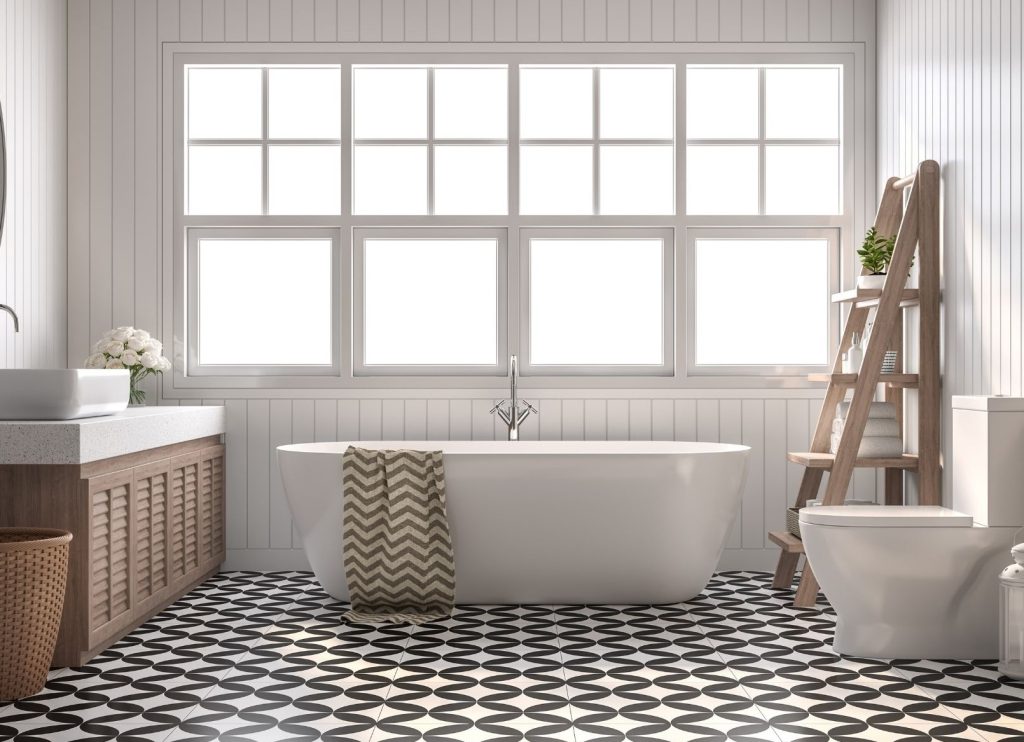
Upcycling also means that less new raw materials are being used. The addition of a splash of paint to some tiles can really give something a new lease of life. Tester pots and wallpaper samples are great ways of upcycling with items that might already be in your home.
Another benefit of upcycling things yourself means that you will get a unique and personal result; one which no other bathroom will have!
You can also consider what you will do with some of your old bathroom elements. Before you discard, consider refurbishment schemes such as ours where we strip out old components from mirrors to refurbish and reuse, therefore helping to reduce landfill.
Waste less water
From a practical perspective, cutting down your water consumption will make a significant difference when it comes to creating a sustainable bathroom that not only looks great but also does good too.
When doing your research, look for low-flow shower heads and dual flush toilets, which will save on spending as well as water usage.
Do your research
When looking for bathroom fixtures and fittings, consider investing in items where the designers and brands are explicit about where their materials come from and how their products are manufactured. Look for information about their manufacturing methods and locations so that you can make informed and empowered decisions about the items you buy.
Seek out brands that repurpose or reuse packaging, and those that are always striving to use recycled (and recyclable) materials, too.
Made in Britain
Brands that not only design, but that also manufacture their products on homegrown soil are automatically reducing their carbon footprint.
All our mirrors are manufactured in Britain, as it helps us to have visibility over our manufacturing processes and complete control over quality and product lifecycles. In keeping the entire process local, we dramatically reduce the carbon footprint of our products, and in turn this has a positive impact on the planet.
Beautiful Botanicals
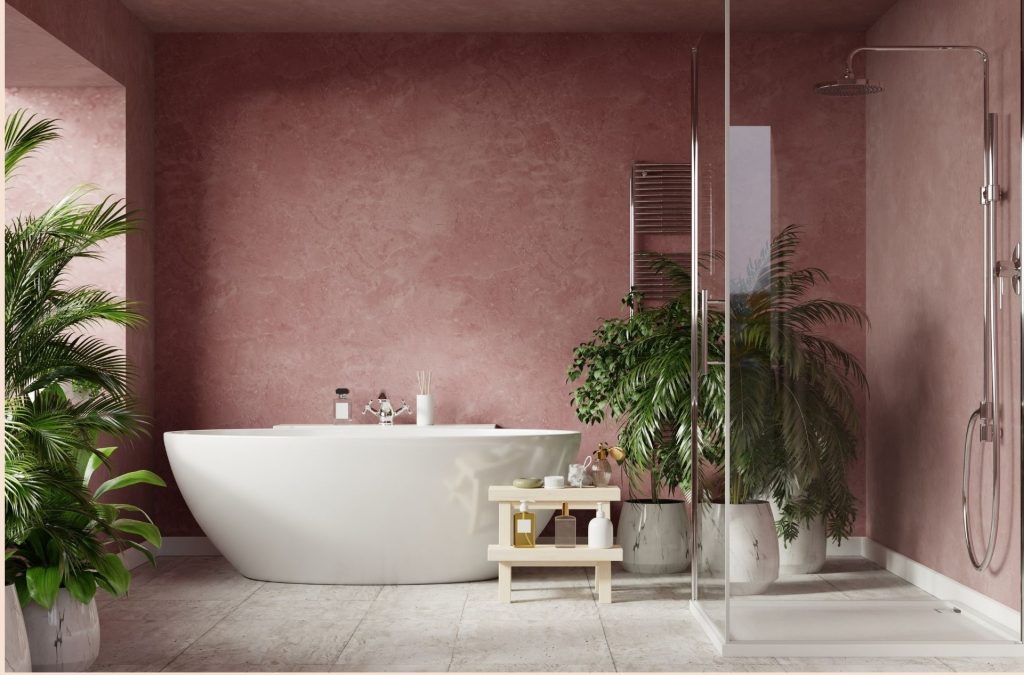
To complete a sustainable bathroom scheme, one way to add a further layer of eco-friendliness, is to introduce living botanicals.
Plants can clean the air by removing toxins that we breathe into it, which makes them a great option for enhancing a sustainably styled bathroom. As well as purifying, they also provide an array of other benefits including better mental health and help to create a natural, comfy bathroom scheme. Visually, they provide serene, spa vibes, which would fit right at home in a sustainably styled space.
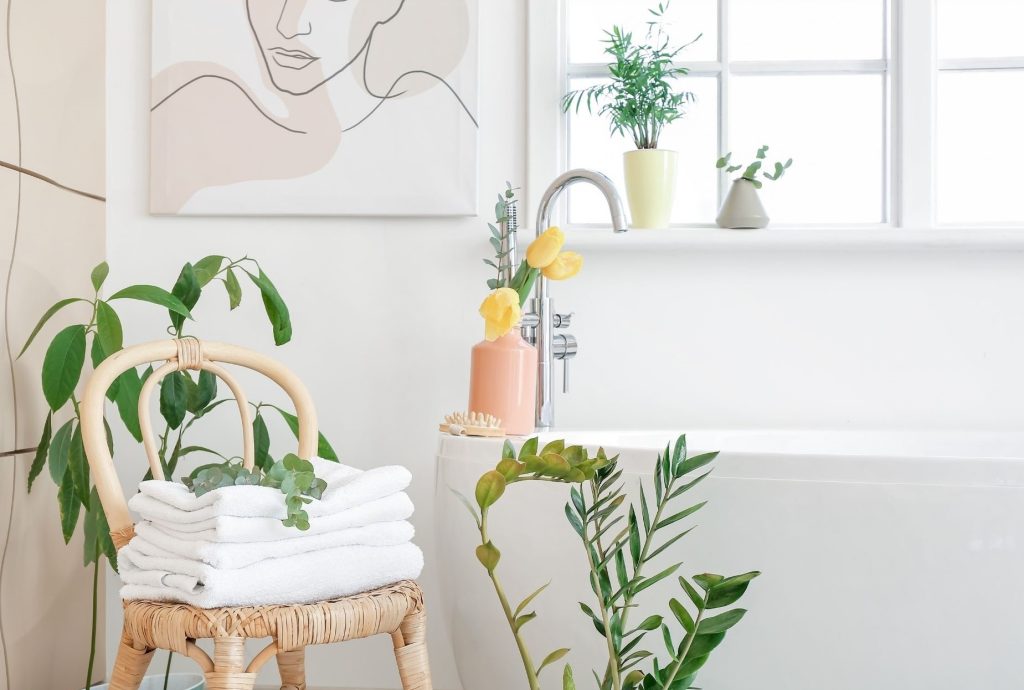
Changing the way in which we approach bathroom design from the beginning is key, as is a holistic and open approach. – By making mindful, simple swaps that can have dramatically positive effects on caring for our planet, it helps us to create conscious, durable, and timeless bathrooms with the serenity that we are all seeking more of.









